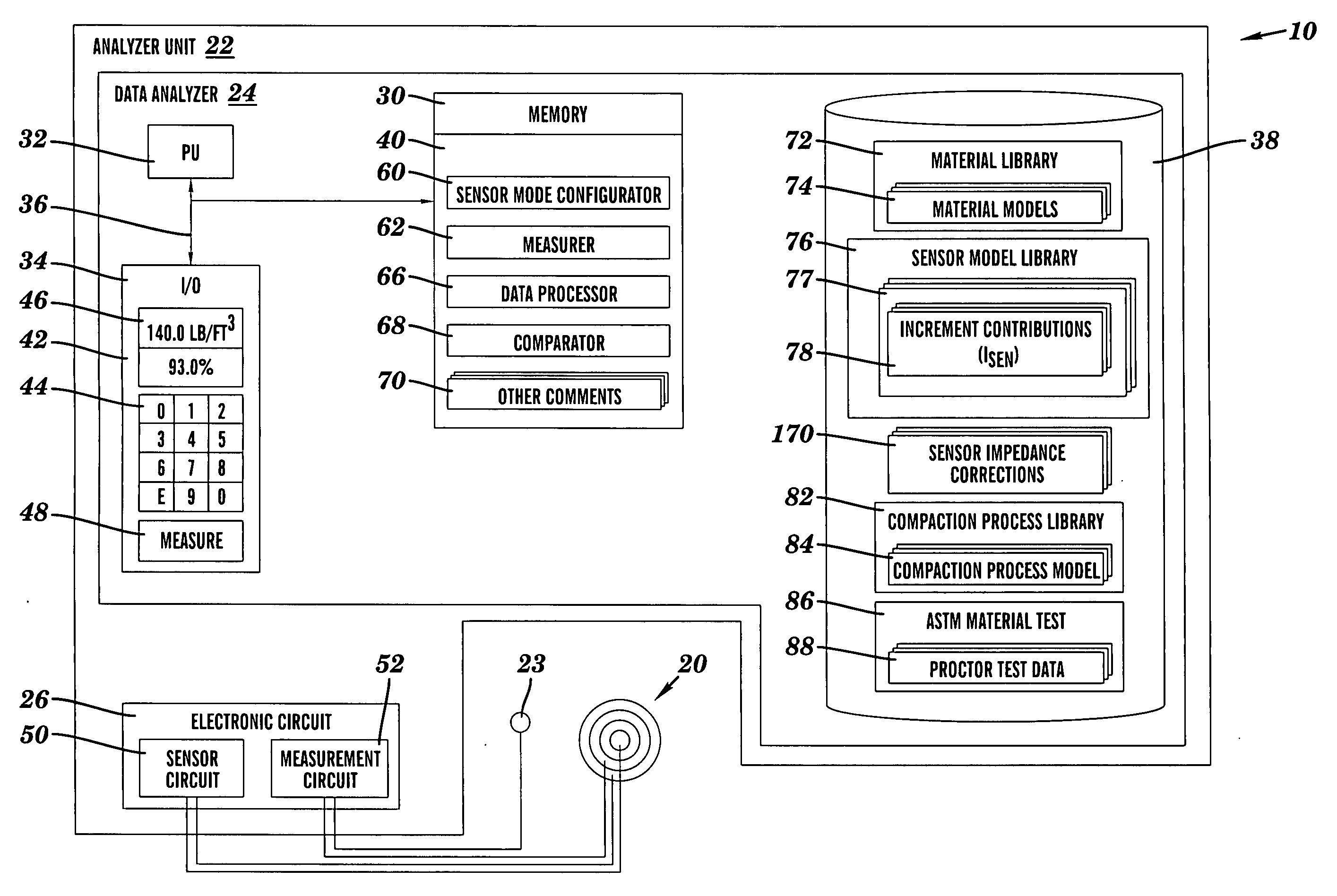Material analysis including density and moisture content determinations
a technology of density and moisture content and determination of material, applied in the field of material analysis, can solve the problems of poor performance, poor strength, and the operation skill of the operator is not enough, and the effect of conducting the test is not easy to achiev
- Summary
- Abstract
- Description
- Claims
- Application Information
AI Technical Summary
Benefits of technology
Problems solved by technology
Method used
Image
Examples
Embodiment Construction
[0034] For purposes of organization only, the description includes the following headers: I. Material Analyzer System Overview, II. Analyzer Unit Overview, III. Sensor Overview, IV. Electronic Circuit: Sensor and Measurement Circuits, V. Implementation of Models to Attain Compaction Indication in Form of an Absolute Density, VI. Operational Methodology, and VII. Conclusion.
I. Material Analyzer System Overview
[0035] The present invention determines one or more engineering properties of a material by measurement of electrical impedance thereof. One particular engineering property is a compaction indication as represented by a density of the material or a level of possible compaction. As used herein, “material” should be interpreted broadly to include all varieties of dielectric materials, e.g., asphalt, concrete, soil, ceramics, bituminous material, or other forms of in-place material such as biological tissue, crops (e.g., tobacco), foodstuffs (e.g., cereal), etc. The preferred em...
PUM
 Login to View More
Login to View More Abstract
Description
Claims
Application Information
 Login to View More
Login to View More - R&D
- Intellectual Property
- Life Sciences
- Materials
- Tech Scout
- Unparalleled Data Quality
- Higher Quality Content
- 60% Fewer Hallucinations
Browse by: Latest US Patents, China's latest patents, Technical Efficacy Thesaurus, Application Domain, Technology Topic, Popular Technical Reports.
© 2025 PatSnap. All rights reserved.Legal|Privacy policy|Modern Slavery Act Transparency Statement|Sitemap|About US| Contact US: help@patsnap.com



